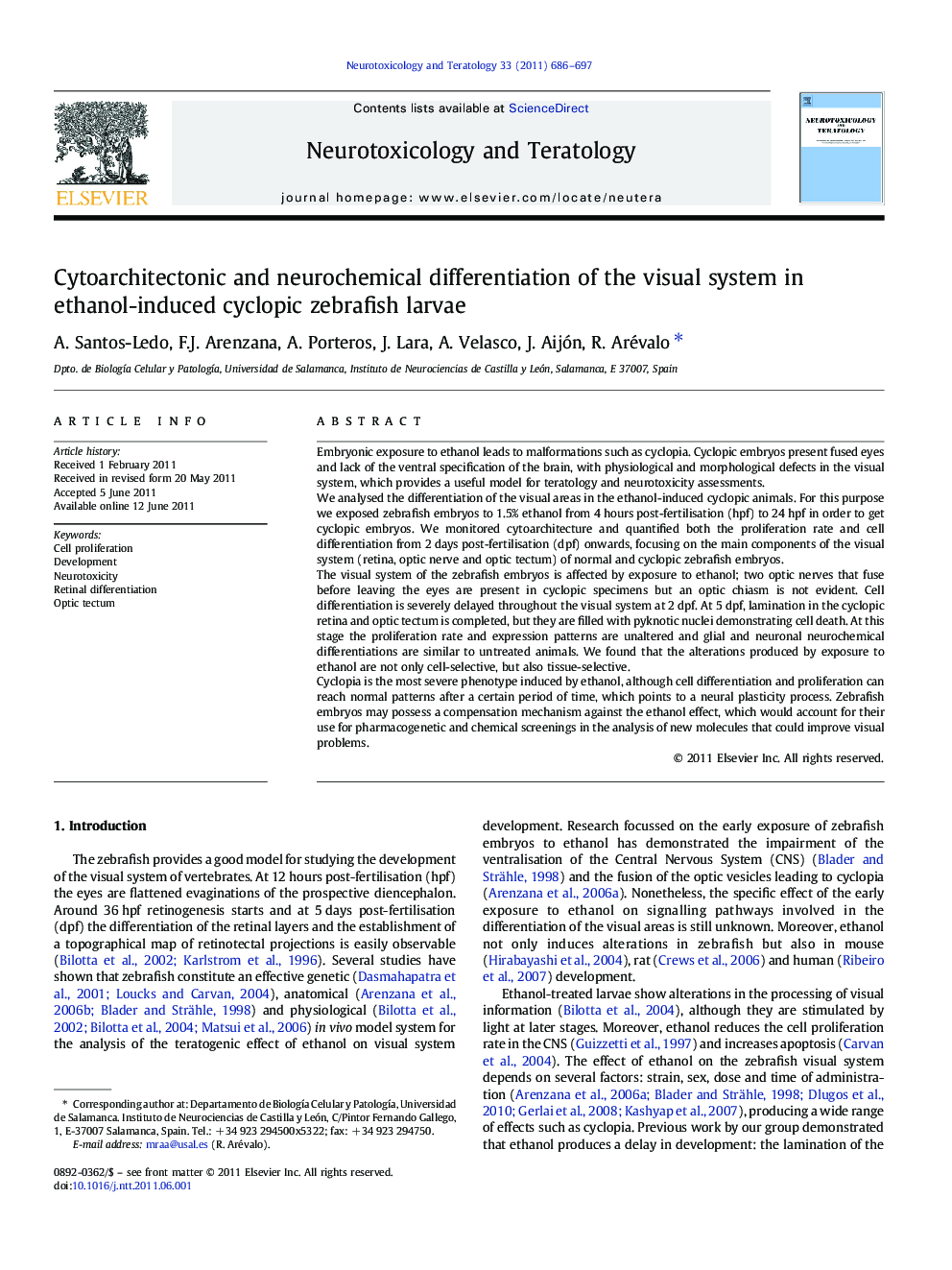| کد مقاله | کد نشریه | سال انتشار | مقاله انگلیسی | نسخه تمام متن |
|---|---|---|---|---|
| 2591606 | 1131818 | 2011 | 12 صفحه PDF | دانلود رایگان |

Embryonic exposure to ethanol leads to malformations such as cyclopia. Cyclopic embryos present fused eyes and lack of the ventral specification of the brain, with physiological and morphological defects in the visual system, which provides a useful model for teratology and neurotoxicity assessments.We analysed the differentiation of the visual areas in the ethanol-induced cyclopic animals. For this purpose we exposed zebrafish embryos to 1.5% ethanol from 4 hours post-fertilisation (hpf) to 24 hpf in order to get cyclopic embryos. We monitored cytoarchitecture and quantified both the proliferation rate and cell differentiation from 2 days post-fertilisation (dpf) onwards, focusing on the main components of the visual system (retina, optic nerve and optic tectum) of normal and cyclopic zebrafish embryos.The visual system of the zebrafish embryos is affected by exposure to ethanol; two optic nerves that fuse before leaving the eyes are present in cyclopic specimens but an optic chiasm is not evident. Cell differentiation is severely delayed throughout the visual system at 2 dpf. At 5 dpf, lamination in the cyclopic retina and optic tectum is completed, but they are filled with pyknotic nuclei demonstrating cell death. At this stage the proliferation rate and expression patterns are unaltered and glial and neuronal neurochemical differentiations are similar to untreated animals. We found that the alterations produced by exposure to ethanol are not only cell-selective, but also tissue-selective.Cyclopia is the most severe phenotype induced by ethanol, although cell differentiation and proliferation can reach normal patterns after a certain period of time, which points to a neural plasticity process. Zebrafish embryos may possess a compensation mechanism against the ethanol effect, which would account for their use for pharmacogenetic and chemical screenings in the analysis of new molecules that could improve visual problems.
► Analysis of the retina and optic tectum of cyclopic zebrafish larvae obtained by exposure to 1.5% of ethanol.
► The visual system of the zebrafish embryos is affected by exposure to ethanol.
► Cell proliferation was unaltered and a rudimentary proliferative germinal zone was present in the cyclopic retina.
► Cell differentiation was affected in cyclopic embryos at 2 dpf, but later, cell markers recovered normal patterns.
► This approach provides valuable neuroanatomical data regarding the nature of teratogenic and neurotoxic effects of ethanol.
Journal: Neurotoxicology and Teratology - Volume 33, Issue 6, November–December 2011, Pages 686–697